19 Easy Ways To Make Every Meal More Nutritious
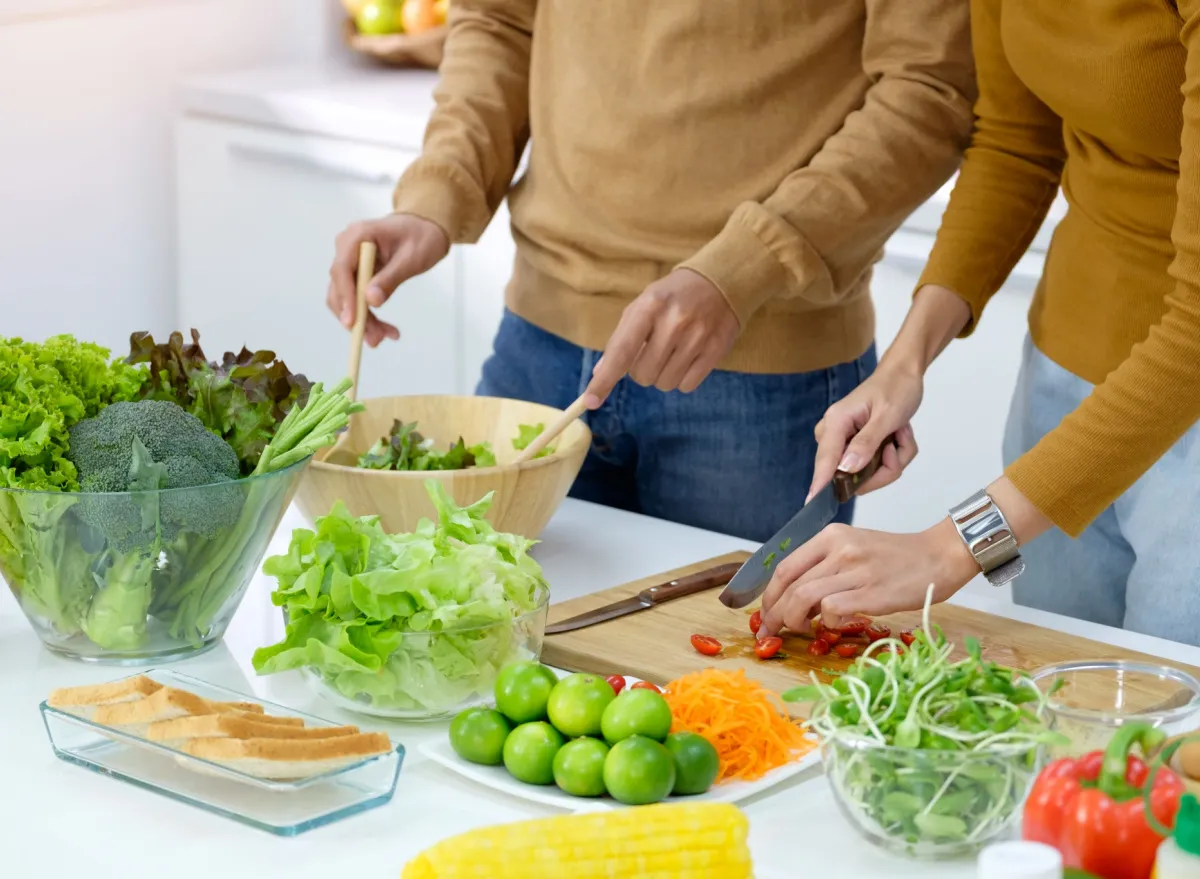
Everybody loves a good hack. If there's a way to make our job, our pastime, or a chore easier, faster, simpler, or more effective, we're all ears. Now that we're all trying to eat healthier, cleaner, and more plant-based, there's no shortage of home-grown hacks for squeezing the most nutrition out of every morsel.
Here are some of our favorite ways to make every meal healthier. Read on, and for more, don't miss Want a Lean Body for Good? Adopt These 8 Eating Habits.
Make a frozen family-sized meal healthier.
Frozen family-sized meals have a bad reputation for being high in sodium. But you can boost their nutritional value to make them much healthier. "My favorite way to add more nutrients to meals while also considering the convenience factor is to use frozen family-size meals that include a protein source, vegetable, and sauce and add an additional bag of vegetables only to the mix when preparing them," says registered dietitian nutritionist Kiran Campbell, RDN. "This helps dilute the amount of sodium and fat compared to if you would've left out the extra veggies. It adds valuable nutrients and most likely an additional serving of vegetables into your day."
Pair plant-based iron sources with vitamin C.
Iron is under-consumed by adolescent girls and women through middle age. "If you don't want to eat meat, which is an excellent source of iron, there are plant-based sources, including fortified breakfast cereals, enriched bread, leafy greens, tofu, beans, and lentils," says Jill Weisenberger, MS, RDN, CDCES, creator of The Prediabetes Meal Planning Crash Course. "But plant-based iron is poorly absorbed without vitamin C, so combine fortified cereal with berries, chickpea salad with tomatoes and bell peppers, and leafy greens with lemon juice."
Add leftover cold pasta and potatoes to a green salad.
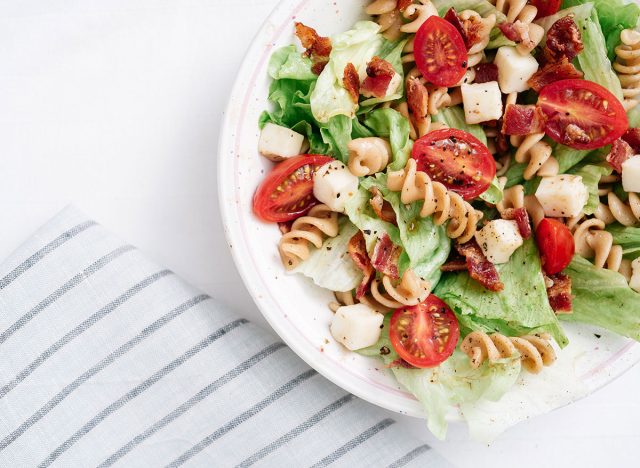
Make a green garden salad even more nutritious by adding cold pasta or potatoes. When cooked pasta and potatoes are allowed to cool, they turn into resistant starch. This kind of starch acts like soluble fiber; it resists digestion. In turn, it can reduce appetite and lower blood sugar levels, improving insulin sensitivity. Because it is fermented in the colon, resistant starch is a pre-biotic, feeding the good bacteria in the gut and potentially improving immune system health. Read more about resistant starch by checking out The Secret Breakfast Trick for a Flat Belly.
Get more nutrition from a carrot by eating eggs at the same time.
Next time you build a garden salad full of raw carrots, orange bell peppers, and tomatoes, slice up a hard-boiled egg to toss on top. Adding cooked eggs to salads helps your body absorb carotenoids like carotene and lycopene found in raw vegetables that have red, orange, and yellow pigments, according to a small study published in The American Journal of Clinical Nutrition. The phytonutrients in those colorful vegetables are powerful anti-inflammatories. To get the most benefit be sure to include the egg yolks, which contain the fats that help your gut absorb those carotenoids.
Chop garlic, then do this.
Garlic has been studied for its role in preventing colon and stomach cancers. Breaking the garlic apart activates its natural disease-fighting phytonutrients. Unfortunately, heat instantly deactivates those phytonutrients. To preserve garlic's powerful health boosters, do this, says Weisenberger: "Chop it, then let it rest for about 10 minutes before heating. Allowing the chopped or crushed garlic to sit for as little as 10 minutes at room temperature gives an important enzyme time to act and preserve its phytonutrients."
Sub out oil for pumpkin puree.
Pumpkin puree can be used in a wide variety of baked goods in place of cooking oil, and you'll gain the benefit of pumpkin's nutrients, such as vitamins A, B1, B6, and C, folate, fiber, plus blood pressure-lowering potassium and magnesium. Replace ¼ cup oil with ¼ cup pumpkin in recipes—since pumpkin has a high water content it contributes a lot of moisture to baked goods, so you'll still get a super moist texture with less oil," says registered dietitian nutritionist Maggie Michalczyk, RDN, owner of Once Upon A Pumpkin.
Keep a bowl of almond slivers on the table.
Put almond slivers or slices in a sealable container on your kitchen table for easy access. Spoon some over hot or cold cereal, yogurt cottage cheese, garden salads, or into smoothies. An ounce of almonds contains 6 grams of protein, plus some heart-healthy monounsaturated fats and fiber.
Top off breakfast with mood-boosting blueberries.
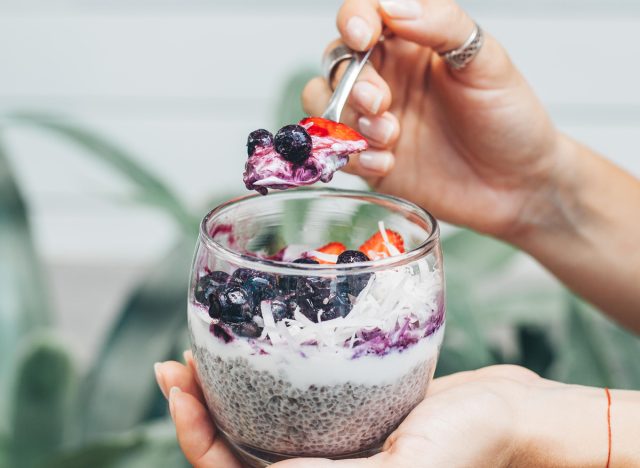
Adding blueberries to your meals is one of the tastiest ways to increase the nutrients you're getting and their benefits in every bite. "Research shows that blueberries can potentially increase serotonin levels, the so-called 'happiness hormone' in the brain and can reduce inflammation caused by free radicals," says Uma Nadu, MD, director of Nutritional and Lifestyle Psychiatry at Massachusetts General Hospital and author of This is Your Brain on Food. Nadu's go-to breakfast is a creamy chia pudding, which she makes with almond milk the night before to make her morning routine easier. "In the morning, I top it with plain coconut yogurt, crushed hazelnuts, and a handful of blueberries."
Wilt, fill, and pour on the vitamins.
Instead of cooking more vegetables, add them to the foods you're already eating, suggests Weisenberger: "Stuff a sandwich like it's a salad between two pieces of bread. Pour jarred salsa over your eggs. Bulk up spaghetti sauce with mushrooms, onions, and carrots. Fill out potato salad with broccoli florets, cherry tomatoes, and red onions. Wilt fresh baby spinach in soups just before serving."
Bake with almond flour instead of wheat flour.
"One of my favorite ways to make baked goods more nutritious with an incredible texture is by using almond flour," says Michalczyk. "Almond flour is naturally gluten-free and contains a unique combination of plant-based protein, fiber, and fats." Almonds also provide about 50% of the daily recommended value of vitamin E, an antioxidant that helps keep skin healthy-looking, Michalczyk says.
Build a better grilled cheese sandwich.
You can adultify a classic grilled cheese sandwich by putting some healthier additions between the cheese and bread before grilling. Add apple slices, broccoli florets, tomato slices, or spinach leaves for more fiber and vitamins A and C. For healthy fats, add slices of avocado.
Don't cut fruit and vegetables until the last second.
When you cut fruits and vegetables, you expose more surface area to the air, which reduces the nutrient content by the minute due to oxidation, says Campbell. It's better to wait until the last second to cut your fruits and vegetables to prevent the loss of vitamins (especially vitamin C) and minerals. "To avoid loss of nutrients in vegetables when cooking use quick cook methods such as stir-frying or even microwave steaming," Campbell says. "I often cook my broccoli in the microwave with a little water to help preserve the most nutrients in them."
Steam up a more nutritious meal.
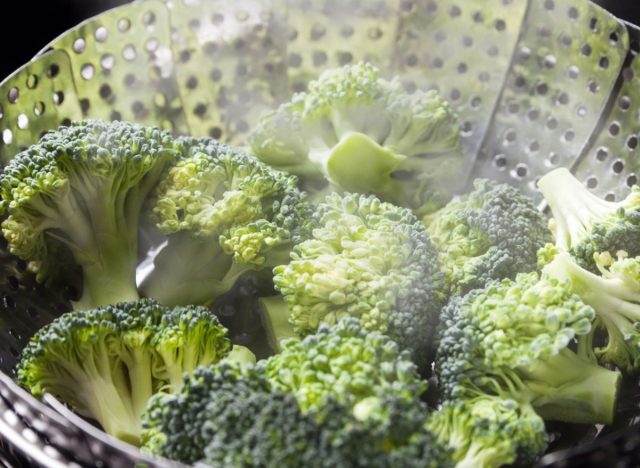
Often how you cook can be as important as what you cook when it comes to getting the most nutrition for your buck. For example, steaming your vegetables retains more nutrients than boiling them as boiling tends to result in more vitamin losses, says registered dietitian and certified diabetes educator Justin Chan, RD, owner of YourDiabetesDietitian.com.
Hide good stuff in the spaghetti sauce.
Even regular pasta that contains no fiber can be made healthier by sneaking fiber into the sauce you put on top. Add any cut-up vegetables to your jarred or homemade sauce to introduce a healthy dose of dietary fiber. And add lentils, white beans, or kidney beans, too. Just one-half cup will contribute 7 grams of fiber and 8 grams of protein to the dish.
Use your noodle, choose zoodles.
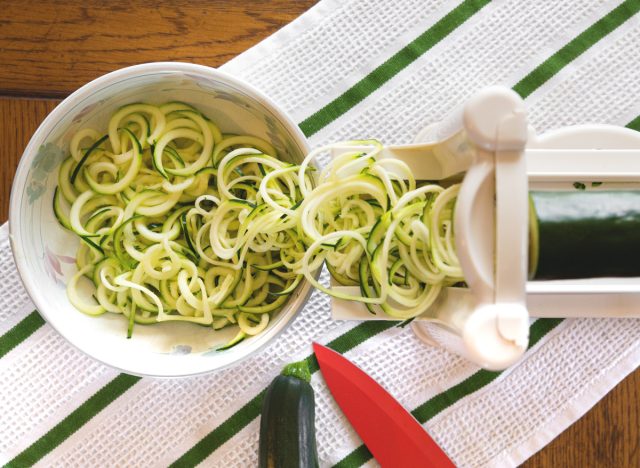
Trading pasta for zoodles (a.k.a. zucchini noodles) cuts out empty carbohydrates and adds vitamins and fiber. While two cups of pasta contain 480 calories, 90 grams of carbs, and two grams of fiber, two cups of zucchini noodles pack just 66 calories and 12 grams of carbs, while boosting fiber to four grams.
Skip the sour cream.
You'll boost the nutritional value of your meal if you use protein-rich plain Greek yogurt instead of sour cream, says Weisenberger. Use the yogurt on chili, baked potatoes, and in bean dishes. It's also a good source of calcium and probiotics.
Add oats to ground turkey.
Gain the heart-healthy, diabetes-busting benefits of whole-grain oats by making turkey-and-oats meatballs. Add ¾ cup of quick-cooking oatmeal to 11/2 pounds of ground lean turkey. Include ½ cup of chopped onion, 1 egg, and ½ cup of tomato sauce. Roll into meatballs and bake in a pan at 400F for 20 minutes. Serve with tomato sauce.
Give your PB&J superpowers.
Start adding ground flaxseeds to everything, says Caitlin Carr, MS, RD, a registered dietitian in Portland, Ore. Flaxseed is a great source of fiber, healthy omega-3 fats, and b-vitamins. "Sprinkle on oatmeal or in a smoothie, or add into a salad, coleslaw, or even dessert." To boost the nutrition of a brown-bag lunch, mix a tablespoon of flaxseed into natural peanut butter and spread it onto a slice of whole-grain bread. Next mix a tablespoon of chia seeds into the jam, jelly, or marmalade and spread on the other slice. "Now you have a high fiber, healthy fat PB&J sandwich."
Invite herbs to dinner.
"Spices and herbs not only add flavor to your dishes, but they also add nutrients and antioxidants," says Lisa Hugh, RD, a registered dietitian in private practice. Stock up on fresh cilantro, chopped green onion, fresh hot pepper, fresh parsley to give meals a nutritional booster shot.








